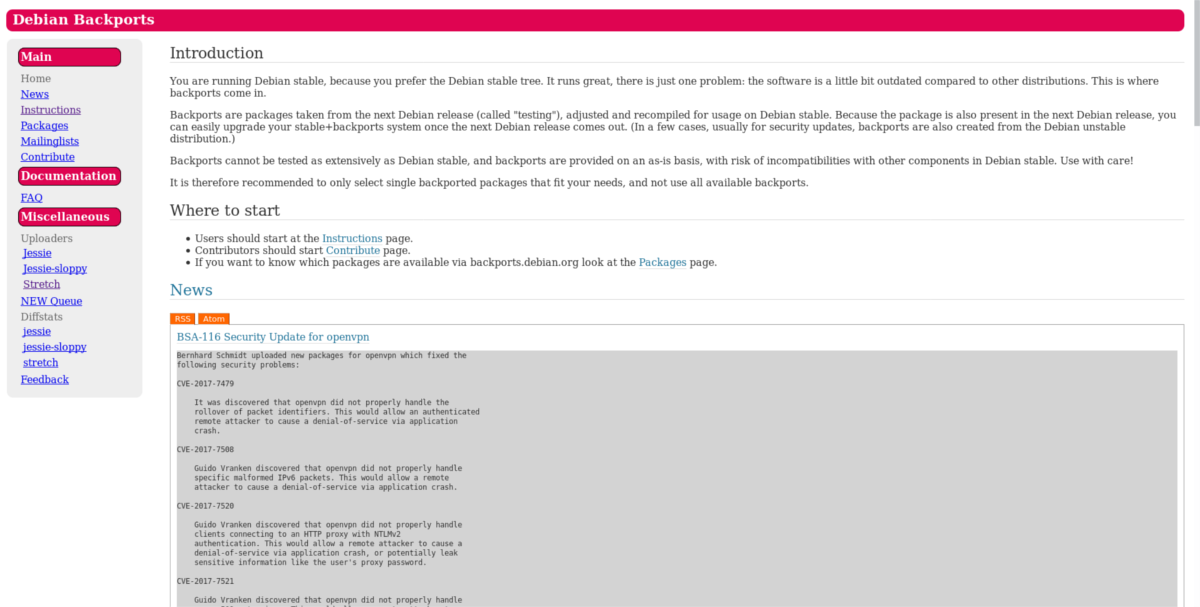Utilizing Debian Stable has its advantages but it surely’s primarily stability that you simply’re going for. The builders of this standard Linux distribution seldom push out new variations of packages. Issues are much less prone to crash and break, and work is not going to be interrupted. It does include its draw back i.e., you robotically get newer software program on Debian Stable. Applications on Debian are considerably older than on different Linuxes. For instance: Debian doesn’t ship the principle launch model of Firefox, and as a substitute has an “extended release” which is months behind. Due to this, customers miss out on the entire enhancements Mozilla recurrently makes.
SPOILER ALERT: Scroll down and watch the video tutorial on the finish of this text.
Should you’re a Debian consumer, there are a number of choices the place you will get extra updated software program with out resorting to utilizing Debian Testing, and even Debian Un-Stable.
Debian Backports
The one most secure, handiest strategy to get newer software program on Debian is so as to add a backport repository.A backport is software program taken from newer variations of Debian which can be underneath improvement, and made out there for Debian Stable releases. With a backport repository, customers can simply get pleasure from new applications on their favourite distribution.

First, open up a terminal window and log into root with su. In case your consumer account can use sudo privileges, be happy to make use of sudo -s as a substitute.
su
After gaining root entry to the shell, do a fast backup of the Debian software program repository. This isn’t required, however is a good suggestion to shortly revert again if errors happen. To make a backup, do:
cp /and many others/apt/sources.checklist /residence/username/
cd /residence/username/
mv sources.checklist sources.checklist.bak
To restore a backup, do (as root):
rm /and many others/apt/sources.checklist mv /residence/username/sources.checklist.bak /and many others/apt/sources.checklist
With the backup out of the best way, open the supply file within the Nano textual content editor.
nano /and many others/apt/sources.checklist
Contained in the textual content editor, go to the underside of the file, and add a # image. After the image, write a remark like “Debian Backports Repository”. Then, on the following line, add the repository itself.
deb stretch-backports foremost
For many customers, “main” is all that’s wanted. Open supply software program is included, and that needs to be sufficient for many to get work carried out. That mentioned, in the event you’re the kind of consumer who likes to make use of non-free software program, take into account including the “non-free” part as nicely. Do that by including “non-free” after “main” within the repository line. Non-free will give customers entry to extra updated, non-free packages like adobe flash, proprietary video codecs and and many others.
Wish to entry extra updated software program that Debian contributors create? Add “contrib” after “main”. Applications within the contributor part might or is probably not open supply. For one cause or one other Debian has chosen to not ship these applications.
Updating
After modifying, it’s time to replace Debian’s software program sources. That is crucial, as a result of despite the fact that new software program sources are within the checklist file, the working system’s apt cache hasn’t seen the adjustments. Run the replace command to inform Debian that the backports repo is there, with:
sudo apt replace
You might discover some new packages and updates grow to be out there, after working an replace. This is because of the truth that newer applications can be found within the backports repo. Improve these packages with the improve command.
sudo apt improve
Different methods to get newer software program
Utilizing Debian backports is a superb alternative, and one that each consumer ought to flip to first. Nevertheless, when the software program isn’t out there in backports repositories, one other sensible choice is to seize a Debian bundle file instantly. Hunt down the developer instantly, and attempt to get a duplicate of a Debian bundle. As a rule, you’ll discover that there’s one out there. That is isn’t a fool-proof thought, as a result of typically you’ll must repeatedly go to the developer for updates, but it surely works in a pinch.
Together with instantly downloading updates, think about using various bundle sorts. The one greatest, most fool-proof (and secure) various bundle format is AppImage. The rationale this expertise will play nicely with Debian is due to the way it works. Reality is, the entire code, libraries and instruments wanted to run a program are inside a single, run-able file.
This works nicely for these on Debian Stable, because it is not going to intervene with the remainder of the working system. Download AppImages here.
Flathub and Snapd
AppImages are nice, however in the event you’re trying to get newer software program on Debian Stable (safely), take into account additionally utilizing Flatpak and Snap packages.
Debian has assist for each of those applied sciences, and supply the identical profit as AppImage does. Whereas it’s true that these are new bundle codecs, and can little question have points at occasions, it’s nonetheless transfer to put in these applied sciences.
